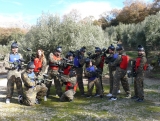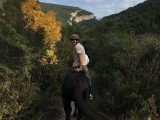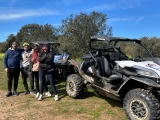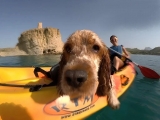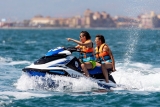The classic resorts of St. Anton, Lech, and Zürs, located around the Arlberg Pass connecting the Austrian states of Vorarlberg and Tyrol, belong to that elite of winter sports destinations that every passionate skier must visit at least once in their lifetime.
The vast ski area, which includes several valleys and mountain ranges with abundant snow, as well as the cosy atmosphere and hospitality of the Tyrolean villages, are the main ingredients of the region. All this is seasoned with a mix of tradition, international jet-set, and nostalgia for the golden age of alpine skiing.

As early as 1961, the various municipalities, with their respective valleys and mountains, came together and created a shared ski pass, forming one of the largest ski areas in Europe, the Arlberg region. But the tradition of skiing in Arlberg dates back to the very origins of alpine skiing. On 3 January 1901, a hundred years ago, a group of enthusiastic skiers, who had set out on an excursion from St. Anton, founded the Arlberg Ski Club during a stop at the St. Christoph hospice. Today, this club, from whose ranks great ski champions like Karl Schranz emerged, with 5,300 members, is the largest in all of Austria.
And in 1928, at the initiative of local skiing pioneer Hannes Schneider and the great promoter of skiing, British Sir Arnold Lunn, the club organised the Kandahar competition for the first time on the slopes of St. Anton. This season, with the World Ski Championships held in St. Anton from 28 January to 10 February 2001, ski racing has returned to its origins, coinciding with the 100th anniversary of one of the most traditional ski clubs in the world.
The Ski Area
The ski area of the Arlberg region boasts 260 km of groomed slopes, spread over an area of about 50 km²: a mountain or a resort for each day, or skiing an entire day without having to descend the same slope twice, depending on your preference.
The largest and most famous municipality is St. Anton, located at 1,300 m altitude east of the Arlberg Tunnel. Its fame and excellent geographical location soon attracted visitors from all over the world to this Tyrolean village. Hence, someone coined, not without a touch of irony, the phrase "the village with a lot of world." The St. Anton resort also includes the municipalities of St. Christoph and Stuben, located on the Arlberg Pass road, with their respective slopes or sub-stations.
St. Anton-St. Christoph-Stuben offers kilometres of groomed slopes, half of which are for intermediate skiers (red), while the other half is equally divided between expert (black) and easy slopes (blue). Its ski lifts explore an entire snowy universe: Galzig, Valluga, Kapall, Rendl, and Albonagrat, where it's practically impossible not to find the slope of your dreams.
Long, easy slopes to enjoy the landscape and let your mind wander as you descend, steep slopes dotted with impressive moguls that demand your full concentration, endless virgin slopes waiting for someone to leave their tracks before admiring them, exhausted but satisfied, from below.
The nerve centre of the St. Anton ski area is Galzig (2,185 m). Its wide slopes host numerous runs and serve as the gateway to the highest part of the region, Valluga and Schindlergrat. The Galzig cable car takes us to 2,085 m, and once there, we can warm up on the easy, wide Osthang slope or descend the equally easy slope leading to St. Christoph before taking one of the chairlifts back up.

From the Galzig cable car station, another cable car takes us on a dizzying traverse above the Steissbachtal valley to Valluga Grat (2,660 m), where a further transfer is needed to reach the highest point in the region, Valluga (2,811 m), accessible with mechanical assistance.
But the slope starts from Valluga Grat. The full descent via Ulmer Hütte and Steissbachtal to St. Anton, over 10 km long, is the region's longest. An equally recommendable option is to continue down past Ulmer Hütte to Alpe Rauz, near St. Christoph, and then on to Stuben, where you can connect to the Albonagrat station.
From Alpe Rauz, you can also take the Valfagehr chairlift back up, where experts will find a variant running just below the lift. But the queen of the challenging slopes is undoubtedly Schindlerkar: from Schindlerspitze (2,660 m), reachable by chairlift from Galzig, turn right into this bowl filled with moguls that spills into Steissbachtal, testing your skill and physical preparation.
An entry variant branching off the Ulmer Hütte slope leads to the Schweinströge area, as spectacular as Schindlerkar. Another long descent for more advanced skiers is the Mattun run, starting at Mattunjoch and also ending in Steissbachtal.
Adjacent to the Galzig-Valluga area is Kapall-Gampen (2,330 m), famous for its traditional Kandahar descent, dating back to 1928. There are slopes for all tastes, and starting the day with an easy, panoramic descent from Kapall to Gampen, the mid-station, is a good idea. The descent to St. Anton covers a 1,000 m vertical drop—long and entertaining.
At the lower section, the new Fang slope has been prepared, offering an attractive option for advanced skiers. As for lifts, the area features a new eight-person cable car from Nasserein, between St. Anton and St. Jakob, up to Gampen station (1,850 m), replacing the St. Anton-Gampen funicular and helping ease congestion at busier points like the Galzig cable car and Gampen chairlift.

In this regard, remember that you can connect to the Galzig area from Gampen-Kapall by descending to the lower Steissbachtal (also reachable via the Kapall-Mattun ski route) and then taking the Zammermoos or Feldherrenhügel chairlift. Making your first turns on Kapall allows you to quickly reach 2,300 m—1,000 m above the valley. From Kapall, you can enjoy one or two relaxed, panoramic descents to Gampen or even a full run to St. Anton before heading to Galzig-Valluga-Schindler Spitze.
On the other side of the St. Anton valley, opposite the two described areas, the Rendl zone is a small standalone resort, unconnected to the others but with a good number of slopes served by half a dozen lifts. A gondola transports skiers to Rendl station at 2,100 m.
Continue with the Gampberg lift or the Riffel I and II chairlifts to access the upper part of the area. The highest point, Riffelscharte, is at 2,645 m. From there, the descent to St. Anton, whose lower section runs through a wide forested area, covers a staggering 1,300 m vertical drop. The Rendl area also stands out for its extensive off-piste variants and ski touring routes.
The resorts of Zürs and Lech, collectively, have nothing to envy about St. Anton-St. Christoph-Stuben. Zürs is located on the Flexenpass at 1,720 m, with slopes practically at the hotel doorstep. The main diamond runs are the Rüfikopf descent (2,362 m), reachable by cable car from Lech via Trittalm and Hexenboden (connecting to the Schüttboden lift), and those on the neighbouring Trittkopf (2,423 m).
The latter are slightly more demanding than the former. On the opposite slope, ascending to Madloch (2,500 m), another gem awaits: the descent to Zug—five kilometres of alternating wide slopes for generous turns and mogul sections. Once in Zug (1,511 m), a hamlet of Lech (1,450 m), two options allow you to continue the classic Madloch loop, a full circuit of the Zürs and Lech ski area, returning to your starting point in either village.
Those who prefer a more relaxed approach to winter sports can ski leisurely towards Lech. Others may take the Zugerberg chairlift to Kriegerhorn and continue ascending to Mohnenfluh (2,377 m).

From there, enthusiasts won’t miss a descent or two to Steinmähder, perhaps via one of the many off-piste variants, before relaxing on the easier slopes of Rotschrofen-Weibermahd-Oberlech and enjoying a well-earned break on one of Oberlech’s sunny terraces (1,730 m). If you started the loop in Zürs, all that remains is to ascend from Lech to Rüfikopf and descend as described earlier.
Off-Piste
In such a vast resort with abundant snow, off-piste opportunities are, as expected, nearly endless. Alongside 260 km of groomed slopes, St. Anton-St. Christoph-Stuben and Zürs-Lech offer about 180 km of off-piste routes, including slope variants and ski tours. In St. Anton, beyond the aforementioned Schindlerkar and Mattun, the Rendl and Albonagrat areas stand out. In Zürs, the highlight is the Madloch descent via Stierloch, ending in Zug. In Lech, powder addicts will find what they seek around Mohnenfluh, Steinmähder, and Rotschrofen.
As always, for off-piste descents—especially ski tours—check snow conditions and avalanche risk, and heed warning signs.
Après-Ski
Panoramic restaurants with terraces can be found at nearly all strategic points, such as Galzig, Gampen, Rendl, Rüfikopf, and Kriegerhorn stations, to name a few. For a mid-descent refuel, stop at one of the ski huts—rustic bars and restaurants slope-side.
After Skiing
As evening falls, the base-area huts in St. Anton fill up. Skiers of all levels and nationalities gather at Senn-Hütte, Mooserwirt, or Rodel-Hütte before their final runs and shedding gear. With live music from professional entertainers, the atmosphere heats up.
The sunny terraces of Lech, Oberlech, Zürs, Stuben, and St. Christoph offer similar vibes. Later, choose from several discos (to name just a few nightlife spots). Between Après-Ski phases, if energy remains, try ice skating, curling, bowling, or a hotel pool.
The indefatigable might play tennis or squash. But one of the most thrilling options is tobogganing down the Gampen run—a 4 km, 500 m vertical drop. The Nasserein cable car operates at night. For culture, visit the cinema or the Ethnographic and Ski Museum in St. Anton’s Kandaharhaus.

Lastly—though this is less "après-ski" than "instead of ski"—you can take a horse-drawn sleigh ride from St. Anton to Ferwall Valley or Lech to Zug for a quieter option. For adventure, try a tandem paragliding flight from Kapall (2,300 m). Dining? With over a dozen high-end restaurants, rustic venues, and international cuisine, the gastronomic offering leaves nothing to desire.
Ski Touring
Opportunities for Nordic skiing, seeking alpine silence and endless virgin slopes, abound—though Arlberg lacks the major ascents or classic ski tours of Ötztal, Venediger, or Valais.
This has advantages: fewer skiers on the same route. Often, you can use standard lifts and add a short climb or traverse to find solitude and untouched snow.
Notable routes include: Kreuzjoch to Moos or Malfon Valley (Rendl); Hinterer Rendl; Albona-Grat and Ferwall Valley; Madloch to Stierloch, then Schafberg to Mehlsack and Zug (Zürs-Madloch); Zuger Hochlicht, Mohnenfluh, and Karhorn (Lech).
St. Anton has two long Nordic circuits and a short training loop. The longest (20 km) follows the Rosanna River to Flirsch. The Ferwall loop (12 km) starts at Hotel Mooserkreuz, circling Ferwall Lake. St. Christoph has a 2.5 km loop starting at ski schools.
Lech offers a 15 km circuit along the Lech River through the protected Zug Valley, plus a 1.5 km training loop to Stubenbach. Zug has a 4 km track from Trittkopf cable car to Flexen Pass. Gear is rentable at sports shops, and ski schools offer Nordic skiing courses.





